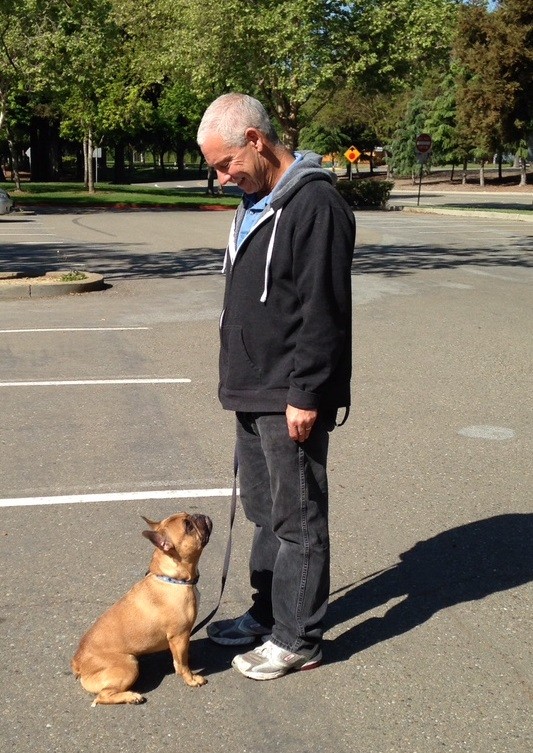Many people inquire about the mainstream dog training techniques that are used by professional dog and puppy trainers. To help shed light on those, I have described those techniques below. In addition, I provide an overview of the training techniques I have skillfully applied over the last 30 years to help dog owners achieve a loving relationship with their dogs. Let’s start with the definition of dog training.
What is Dog Training?
Dog training is teaching a dog a more ideal response to physical cues, verbal commands, or the performance of actions which are not necessarily natural to a dog. People generally start wanting to train their dog once they start noticing unwanted behaviors, such as going potty in the house, leash pulling, incessant barking, digging, jumping, mouthing or aggressive behaviors.
Dog training can also be described as the purposeful changing of a dog’s behavior and may involve socialization to the native environment, basic obedience training, or for specialized activities such as law enforcement, search and rescue or assistance to people with disabilities.
Training a dog can be one of the most arduous tasks of pet ownership or it can be a time of building a lifelong bond that is very rewarding. Understanding the different methods available for you to train your dog is helpful and also necessary if you need to select a professional dog trainer to help you with your dog.
Training methods boil down to two main techniques: traditional dominance method, based off William Kohler, and the positive reinforcement method.
Traditional Dominance Training
The traditional dominance method of dog training became prevalent around World War II and was used by the military to train dogs and ensure that they followed commands. In this method, it is assumed that dogs behave badly because they are trying to gain higher rank and are placed in a conflict condition, where the dog is likely to make an error. Trainers correct the dogs by yanking a leash when attempting to get a dog to heel or using a shock collar to assure a dog stays within limits.
This type of training does not take into consideration the root cause of dogs’ behavior. For example dogs who charge other dogs would automatically be strongly corrected without first understanding why the dog wants to charge. The reason for the misbehavior could be dominant aggression, or more likely fear-based aggression.
This method is usually only successful for few to no dogs. The relationship between the dog and person will be based on fear, which results in the dog not trusting the person in a stressful situation. If heavy compulsion is used for a fear-based negative behavior, the dog will not improve. In fact, the problem will worsen.
Positive Reinforcement Training
The positive reinforcement method of training is used loosely, but basically the trainer shapes the behavior of the dog by only rewarding the dog for the behavior the trainer wants. Unwanted behaviors are ignored. This type of training works well for some behaviors, but does not equip the trainer to handle issues in a realistic way. For example, you can’t really ignore a dog that bites you!
So what is the answer for how to train your dog?
Gary Maria’s Dog Training Methods
 I use the BALANCED TRAINING approach, which is a unique blend of positive reinforcement with some mild compulsion. Balance training consists of positive reinforcement and reminders to get the dog refocused along with a lot of touch and praise. Remember, dogs want to please and they need a job they can do well.
I use the BALANCED TRAINING approach, which is a unique blend of positive reinforcement with some mild compulsion. Balance training consists of positive reinforcement and reminders to get the dog refocused along with a lot of touch and praise. Remember, dogs want to please and they need a job they can do well.
Mild compulsion is important to establish the leader/follower relationship. Using mild compulsion is not used to punish the dog, rather it is a tool used by the trainer to let the dog know that the behavior is not acceptable.
Using a reward-based training method, I can speed up the learning curve significantly, and can train you in how to do the same.









